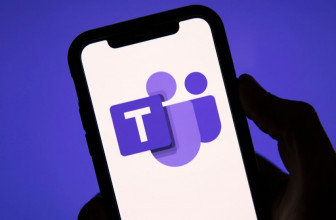
Apple announced macOS Big Sur at WWDC in June, and though we’ve seen a preview by way of a public beta in September, the software has yet to officially roll out. At its Mac-focused event today, the company unveiled its new ARM-based chipset for laptops: the M1. It also shared some additional optimizations for the new silicon as well as an official release date for the software update, which rolls out on November 12th.
“For the first time ever, we’ve been able to design macOS for our own silicon,” Apple’s software engineering lead Craig Federighi said during today’s presentation. “MacOS Big Sur is engineered down to its core to fully take advantage of all the capability and power of M1.”
As a recap, Big Sur brings with it some notable updates like a revamped, customizable Control Center, a re-organized Notifications Center and improvements to Maps, Safari and Messages. Today, Apple said the software is also tuned to work well on the company’s new M1 chip. Like other ARM-based PCs, Apple said Macs using the M1 chipset will also wake from sleep very quickly.
MacOS Big Sur on M1-enabled machines will also use the right cores for specific tasks like other modern ARM-based devices — high-performance cores for more taxing apps, for example, and the high-efficiency cores for less-intensive functions.
On M1 machines, Safari will run Javascript programs one and a half times faster and is almost twice as responsive as before, Federighi said. Animations will also be quick and smooth, he said, and rendering 3D animations or editing raw video footage will be similarly speedy. This is thanks in part to the new unified memory architecture, he added.
“We built macOS on Apple Silicon to use the same data formats for things like video decoding, GPU and display,” so editors don’t need to waste time and money converting files.
“Of course, we’ve optimized all of our apps for M1,” Federighi said, shouting out Pages, Numbers, Keynote, Garage Band, iMovie, Logic Pro and Final Cut Pro as some of them. One of the biggest problems plaguing ARM-based PCs is app compatibility, and Apple also pointed out its Universal Apps that will work on M1-powered devices. The company said Adobe and Omni Group are bringing universal versions of their apps soon, starting with Lightroom next month and Photoshop early next year.
During its event, Apple also showed off a slew of developers talking about how easy it was to transition their apps to Universal versions. This perception of how easy it is to make compatible apps for the new machines is key to Apple’s success in moving over to ARM-based laptops. Microsoft’s failures in this space are a clear lesson to learn from.
Existing apps that haven’t ported to a Universal version will find Big Sur’s Rosetta 2 helpful. It will translate apps made for x64-86 machines to run on Apple Silicon. It sounds similar to Microsoft’s emulator on Snapdragon PCs, and buys developers some time to move their apps over to the Universal platform. Apple said on its developer page that Rosetta “is not a substitute for creating a native version of your app.” We don’t know yet how long Rosetta 2 will stick around.
From what we’ve already seen, Big Sur also features a redesign, although from our preview the changes are subtle and feel less like a makeover and more like a touch-up.
Some enhancements are under the hood, like Photos animations showing up more quickly thanks to Metal support. Others are only obvious when you make use of new customization options. Now that we have an official release date for the final software, we can look forward to testing the macOS update — hopefully on one of the new M1-powered Macs.
Source: engadget.com









































